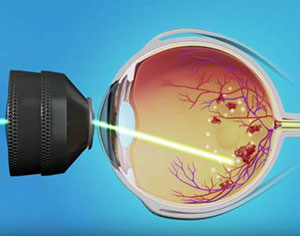

Reading with only the good eye will not harm either eye, so do not be afraid to read that way until the reattachment heals.Īfter surgery, patients want to resume their favorite activities, including reading, as quickly as possible. Your low vision optometrist can recommend specific low vision glasses or devices that can enlarge text and graphics to the extent you require.Īlso, you may find it easier to read with the unaffected eye.

Magnify Your Screen or BookĪ magnifying device will make letters in printed material larger and more accessible. Make reading easier by reading from books with large print, or bypass reading altogether by listening to audiobooks. In the days and weeks following surgery, when you are not yet able to read from books or a computer, use a screen reader, which converts written text into auditory recordings. Add some extra lamps and use fluorescent and halogen bulbs that illuminate reading material more effectively than incandescent bulbs. You may need more light to see and read than you did before your retina detached. The retina contains layers of nerves that are sensitive to light. It is possible that surgery has altered your optical prescription, so having updated eyeglasses will help you see and read more clearly. When your eye surgeon feels your eye has recovered, they will recommend having an eye exam to determine whether your eyeglass prescription is still right for you. The following are some tips for reading following retinal detachment surgery: 1. However, reading or watching television won’t harm your eyes, and there is no reason not to try to read if you feel so inclined. Until the retina heals and holds its position, you may see bright spots or your vision could be blurry. Vision in the affected eye or eyes is likely to be poor for weeks following surgery, making it difficult to read.

#Retina surgery manual#
Patients are also encouraged to avoid any activities that require high-level visual acuity or depth perception, which may include driving or manual labor. Altitude will cause a gas bubble to expand and pressurize the eye, leading to permanent blindness. In addition to positioning for one week, patients are restricted from flying until the gas dissipates over a period of 2-8 weeks. This positioning typically lasts for one week after retinal detachment repair. Since a gas bubble floats towards the ceiling, patients are frequently advised to take certain head positions to move the bubble over the detachment. It is important that the gas bubble flatten the area of retinal detachment. Surgical repair of a retinal detachment typically involves the injection of a gas bubble into the eye, which temporarily stabilizes the retina while laser treatment provides long term attachment. This is a medical emergency requiring immediate repair by an ophthalmologist trained in retina surgery. The most common restrictions following retinal detachment repair include avoiding air travel, maintaining certain head positions, and avoiding high-level visual tasks.Ī retinal detachment occurs when the retina spontaneously separates from the back of the eye, most commonly between the ages of 50 and 70.


 0 kommentar(er)
0 kommentar(er)
